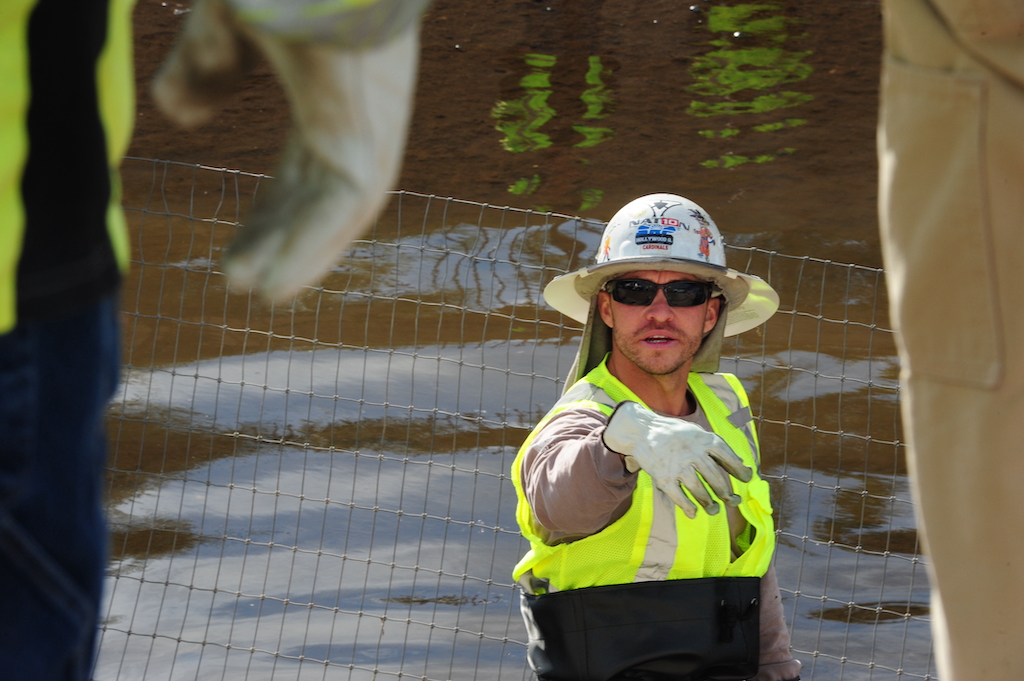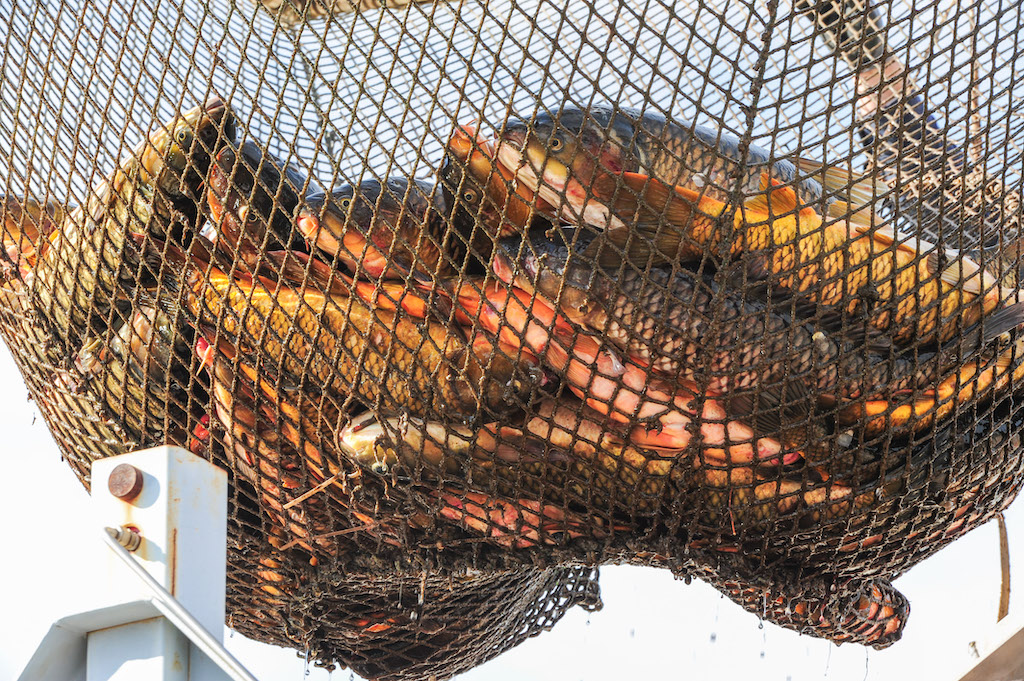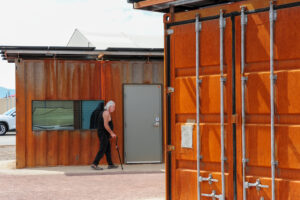(Mesa, Arizona) — Each November, as the desert heat of Arizona finally begins to ease, a hidden spectacle unfolds along the complex network of canals that nourish the Phoenix metropolitan area. The Salt River Project (SRP) annual canal dry-up is more than routine maintenance; it’s a unique moment that unveils the balance between human innovation and natural processes, thanks in part to an unconventional ally: the white amur fish.
Related → Solar plant in Queen Creek, Arizona to generate power for 3,300 homes
The desert’s living lawn mowers
Introduced to Arizona’s canals in 1989, these resilient fish, native to Asia, play a crucial role in controlling invasive aquatic vegetation. Nicknamed “living lawn mowers,” white amur fish consume vast quantities of water hyacinth, filamentous algae, and other plants that can clog the canals and obstruct water flow. Without them, SRP would have to rely more heavily on chemical herbicides and costly dredging to keep the canals clear.
The white amur’s voracious appetite offers a cleaner, cost-effective solution for vegetation control, which not only helps maintain canal efficiency but also supports the health of the aquatic ecosystem.
As part of a broader effort to use natural methods for environmental balance, the presence of white amur demonstrates the powerful role that species can play in maintaining ecological stability.
A pause in the flow
Every November, SRP begins to temporarily halt the water flow in sections of its canal network to clean, inspect and repair aging infrastructure—an essential task to ensure a steady supply of water for the region’s agriculture, industry, and growing population. This dry-up, however, poses a significant challenge for the white amur fish.
To protect them, SRP crews guide the fish to specific areas of the canal where they can be safely gathered. In a meticulous and complex operation, workers navigate the muddy, exposed canal beds, directing the fish into nets so they can be transferred by specialized trucks to other canal locations.
This annual process serves as a reminder of the interdependence between human and natural systems, showing how careful planning and hands-on management allow Arizona to benefit from its canal system without compromising local ecosystems.
A sustainable solution for canal maintenance
SRP’s White Amur Program demonstrates a sustainable approach to an engineering challenge—the need to control unwanted vegetation. By harnessing a biological solution to control aquatic vegetation, SRP has minimized the use of chemicals and cut maintenance costs.
This program showcases how natural solutions can reduce environmental impact—a valuable insight as communities worldwide seek to balance human needs with ecological health.
The role of the white amur highlights an important lesson: even small interventions in nature can create significant, positive effects. As climate change and urban expansion put increasing pressure on natural resources, SRP’s program provides an innovative model that merges engineering with environmental awareness.
Guardians of Arizona’s future
The work of the white amur is a powerful example of how even the most unassuming species can profoundly influence human projects. Programs like SRP’s suggest a path forward, integrating natural processes into infrastructure management and environmental stewardship.
As Arizona faces the twin challenges of climate change and rapid population growth, SRP’s White Amur Program underscores the value of biological solutions and the importance of protecting local ecosystems.
The annual canal dry-up becomes more than just a pause in water flow; it’s a moment to reflect on Arizona’s unseen guardians and the collaborative efforts required to preserve the environment.
In a landscape as harsh as Arizona’s desert, where every drop of water is precious, the partnership between human ingenuity and ecological resilience tells a story of adaptation, respect, and interdependence.
Quietly but powerfully, the SRP White Amur Program, like the white amur fish themselves, is reshaping the future of sustainable water management to meet the needs of a thirsty world.
“They [the fish] clean out the canal for us, and we move them as safely as possible to other parts of the canal so they can keep doing their job.”
Kyle Quiroz, Chemical Applicator Specialist, SRP

White amur fish: 7 quick facts
Arizona’s canal system relies on a unique ally for maintenance: the white amur fish. Since 1989, Salt River Project (SRP) has used these fish to control weeds and algae naturally, helping maintain a clean, efficient water flow for 2.5 million Valley residents. Here are seven quick facts about these helpful fish and their role in the canals:
Here’s a list of seven quick facts about the white amur fish and Arizona’s canal system:
-
Weed control specialists: White amur fish, stocked in the Arizona canal system, consume weeds and algae that would otherwise clog the canals and slow water flow.
-
Big eaters: Each fish can eat up to 75% of its body weight in vegetation daily, making them highly effective at keeping canals clean.
-
Established cleaners: White amur fish were first introduced to the Salt River Project (SRP) canals in 1989 as a natural alternative to chemical herbicides and mechanical cleaning.
-
Population growth: The canal system initially started with 1,800 fish in 1989, and today approximately 44,000 white amur inhabit the canals.
-
Protected species: Under Arizona Game and Fish Department regulations, white amur are protected and cannot be removed from the canals.
-
Essential to water Flow: The 131-mile canal system supports nearly 2.5 million residents in the Phoenix Valley, relying on these fish to maintain unobstructed water flow.
-
Sustainable solution: SRP uses white amur fish as a cost-effective and environmentally friendly way to keep the canals clear, avoiding more expensive methods like dredging or herbicide application.
These fish play an essential role in maintaining the efficiency and cleanliness of the waterway infrastructure in Arizona.

© 2024 - 2025, Eduardo Barraza. All rights reserved.






